What Art Styles Were Popular in 19th Century America
19th-century American fine art in v themes
The century after the United States established its independence saw artists making works that were crucial to forming the land's cultural identity
The 19th century was a defining fourth dimension for the United states of america. The nation had simply gained independence from Uk and was chop-chop expanding its territory westward. Cities including Boston, New York, Baltimore, and Philadelphia were becoming powerful industrial and financial centres, while the whole land faced a major social and political crisis over slavery, resulting in the brutal Civil State of war.
These turbulent events and the growing self-confidence of the chop-chop expanding nation had a profound upshot on its painters. For decades the young country'due south artists had largely emulated the styles and subjects of British and European paintings owned by wealthy colonial families, but as the audience for fine art grew and the country'due south offset public museums opened, distinctively American painters emerged across a range of genres.
- one
In 1825 the 24-year-onetime British artist Thomas Cole sailed up the Hudson River to capture the beauty of New York country's Catskill Mountains. The paintings he created, which drew on concepts of the sublime and foregrounded the scale of America's wild landscapes, would spark the country's first unique creative move and inspire a generation of artists. Cole's students Frederic Edwin Church building and Asher Brown Durand joined him on sketching trips to the Adirondacks and New England, resulting in some of the nation's finest output in 19th-century landscape painting.
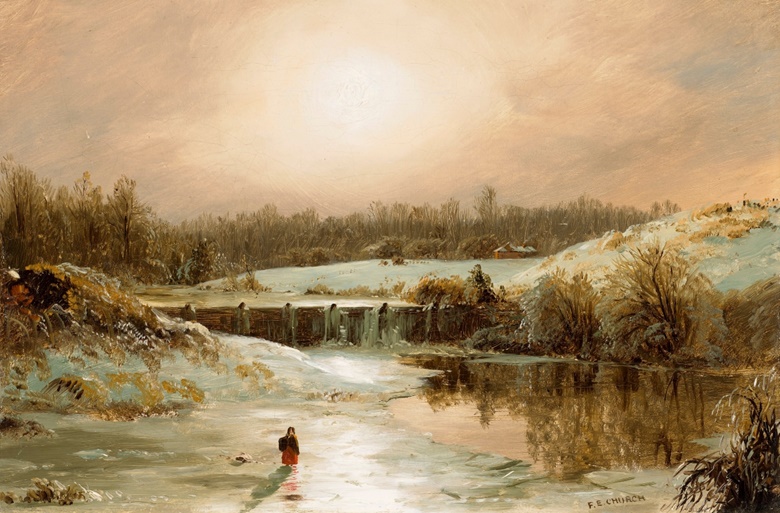
Church became one of the most recognised of the grouping, with his m canvases and idealised views attracting thousands of visitors on international tours. He also painted landscapes in South America, the Arctic and, afterwards, the Middle Due east and Greece.
Durand became increasingly drawn to naturalism, peculiarly after visiting England and seeing the piece of work of Lawman. After Cole's expiry in 1848 he became the Hudson River School's leader, writing a series of nine Letters on Landscape Painting published in 1855 in The Crayon, one of the beginning American periodicals dedicated to art.
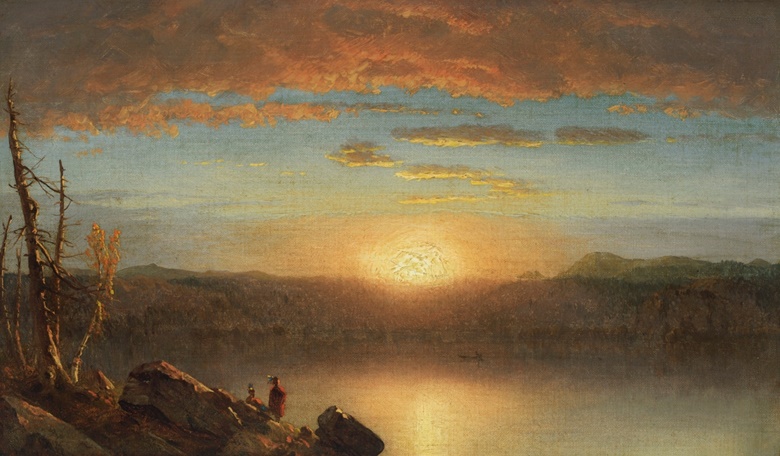
Second-generation painters associated with the school, John Frederick Kensett and Sanford Robinson Gifford, travelled in Europe for several years. Both incorporated the continental sensibility for landscape painting into precisely rendered canvases of their natural surroundings.
- 2
The 19th century was when the US as we know it today became a reality, and when America's expansionist mythology — manifest destiny — was born. The Louisiana Buy of 1803, when the US government bought massive tracts of country from the French, nearly doubled the size of the state, and expeditions were swiftly mounted to survey and secure the new territories. Over the next few decades successive governments ruthlessly annexed land occupied past Native Americans as far as the Pacific coast.
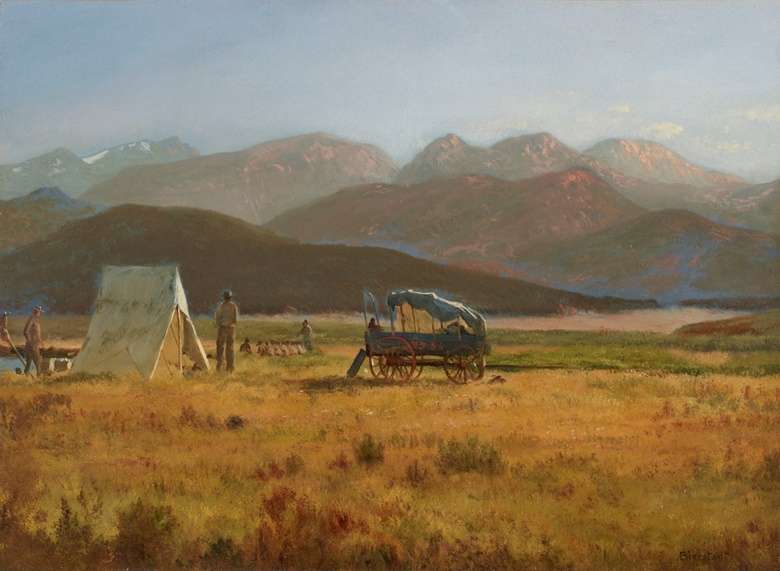
Artists such every bit Albert Bierstadt and Alfred Jacob Miller were among the starting time to certificate the W. Presently after moving from Baltimore to New Orleans in 1837 Miller joined a fur-trading expedition to the Rocky Mountains. He recorded the mural and visited Native American communities, documenting their lives and culture in Romantic paintings aimed at a European audience.
Starting in 1859 Bierstadt travelled to the Rockies with a government survey team, and later to Yosemite Valley and Yellowstone. Sketches from these trips were the basis for the epic canvases of unspoiled natural landscapes for which he became famous.
A awe-inspiring painting of the M Canyon by Thomas Moran, who was influenced by J.M.Westward. Turner and had too joined a U.s.a. Geological Survey team to Yellowstone, helped persuade Congress to protect the area as the land'due south get-go national park.
Paintings of hunting and trapping scenes by William Tylee Ranney were inspired by his time in the south-west. He had left his studio in Brooklyn in 1836 to volunteer with the Texas Ground forces in the revolution led by Usa colonists against the Mexican government.
Meanwhile, artists such as Frederic Remington and Charles Marion Russell focused on heroic images of cowboys, which would get a touchstone of western American iconography.
- 3
As American cities like Philadelphia — the country'south kickoff capital letter — flourished during the early 19th century, and more wealthy and middle-form citizens looked to beautify their homes, a blast in still-life painting developed. Coming together the need, many artists looked to the before traditions of 17th-century Dutch and 18th-century French painting, and their contemporaries in England, to create lush compositions of American abundance.
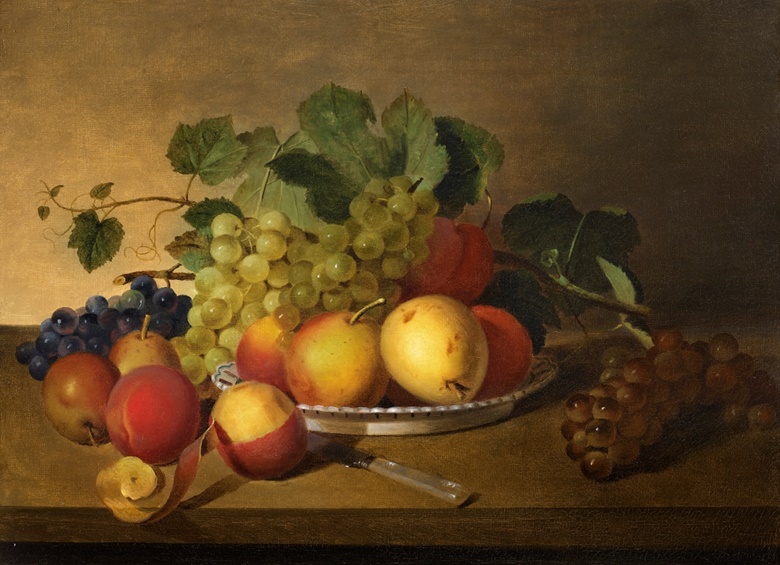
Amongst the most renowned of these in the early century was Raphaelle Peale, one of 16 children of the painter and inventor Charles Willson Peale, several of whom were named after famous artists. Like many others in the Peale dynasty, Raphaelle plant acclaim and patronage in Philadelphia, and while his brother Rembrandt focused on portraiture, he became particularly celebrated for his even so-lifes.
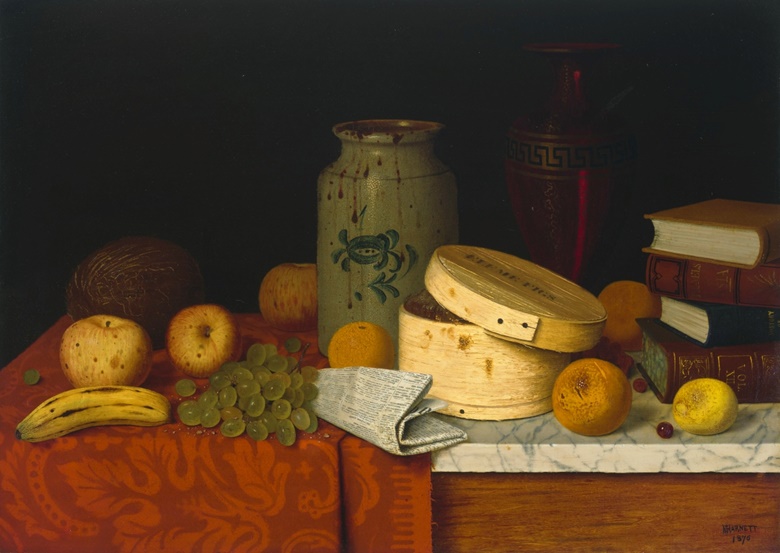
The utilise of trompe 50'oeil — the convincing mimicry of reality in which objects seem to extend out of the frame — was also pop. Masters of such techniques include William Michael Harnett, John Frederick Peto, De Scott Evans and Jefferson David Chalfant.
Two émigrés from what is now Federal republic of germany also fabricated their name in this field, working in New York and around New England. Severin Roesen had the more spectacular fashion, painting elaborate vases of flowers, while Joseph Decker mostly focused on edible subjects, including basics and fruit.
- four
Every bit American painting adult through the 19th-century many artists, including Winslow Homer and Eastman Johnson — a co-founder of the Metropolitan Museum of Fine art in New York, which opened in 1872 — moved away from bookish painting to discover beauty in everyday life and shape a distinctly American field of genre painting.
Homer had trained as a commercial illustrator in Boston, where he depicted New England social life for magazines such as Harper's Weekly, but would become one of America's most revered artists. He turned to oil painting and watercolour subsequently moving to New York in 1859 and, in addition to beingness embedded with the Union Army as an artist during the Civil War, was greatly influenced by a ii-year trip to England's coastal villages in the early 1880s.
- 5
While the US government'southward ambitions might accept been focused on land, many artists turned their attention offshore, creating a tradition of maritime fine art rooted in America's seafaring culture. James Edward Buttersworth was born in London but settled in West Hoboken, New Jersey, in 1845, where he created detailed and dramatic paintings of sailing ships. He chronicled the 1851 win by the New York Yacht Club'southward schooner America in the Hundred Republic of guinea Cup race in England, and painted the subsequent challenges for the America's Cup, every bit it became known, until his expiry in 1894.
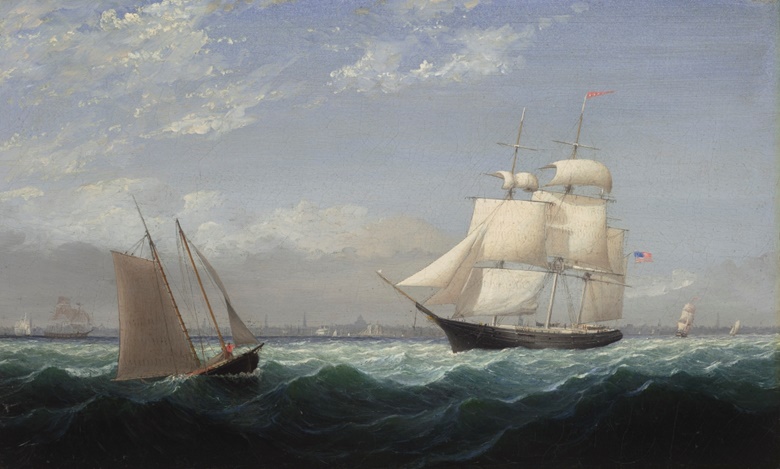
Fitz Henry Lane lived for much of his life on Massachusetts'due south North Shore. His father was a sailmaker but Lane's early bent for drawing led him to work as an apprentice in Pendleton's lithography shop in Boston for more than a decade. His training allowed him to create meticulously detailed marine paintings that accentuate the play of light.
While he was also part of the Hudson River School, Francis Augustus Silva followed the waterways farther out to focus on coastal landscapes, painting scenes around the New York, New Bailiwick of jersey, Rhode Isle, and Massachusetts shores.
Source: https://www.christies.com/features/19th-century-american-art-in-5-themes-12033-1.aspx?sc_lang=en
0 Response to "What Art Styles Were Popular in 19th Century America"
Post a Comment